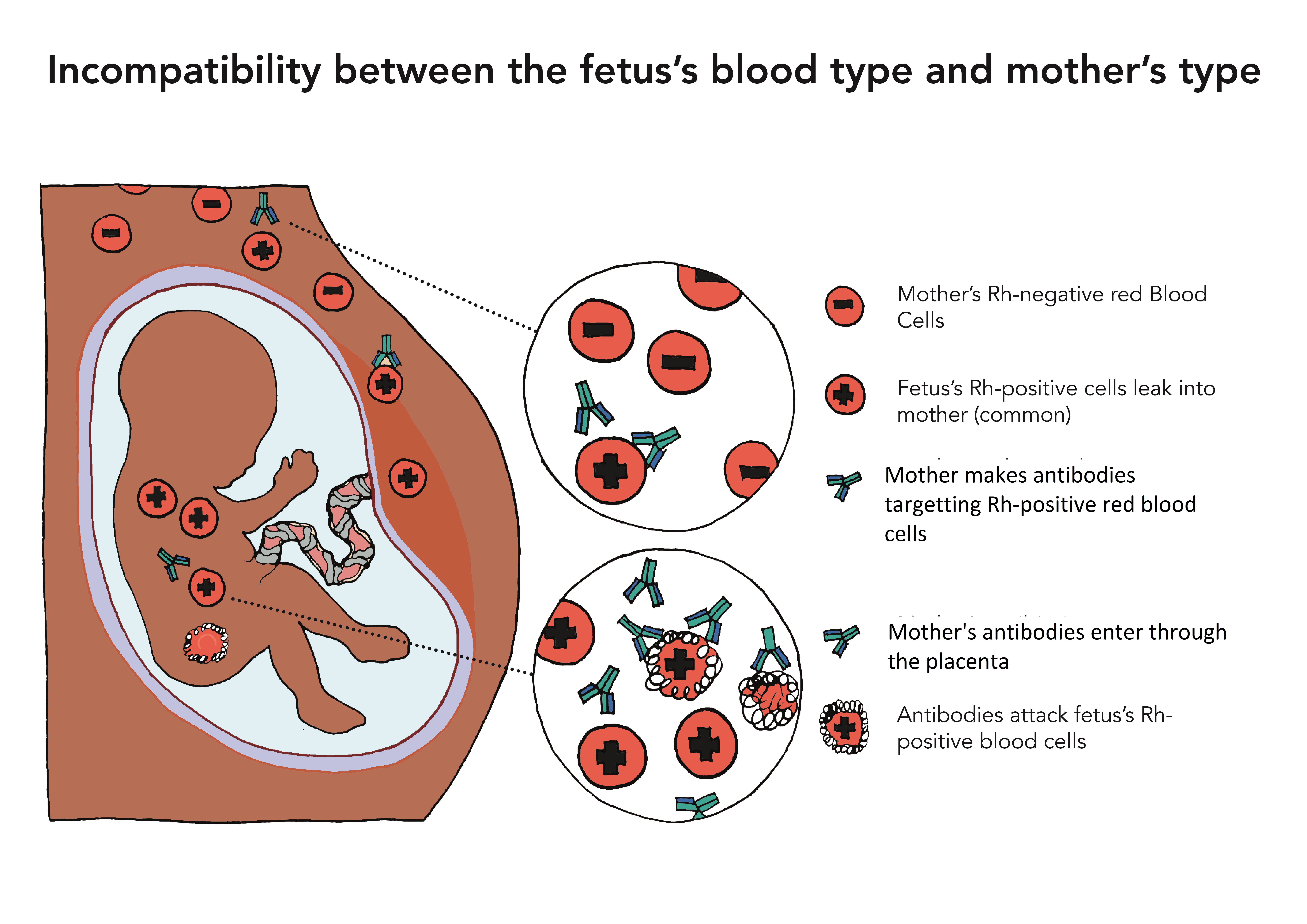Anaemia (fetal)
Anaemia (fetal)
What is fetal anaemia?
The fetus uses red blood cells to carry oxygen in its circulation, just the way children and adults do, and as a result, the fetus can also suffer from low blood counts or anaemia. This problem may result because the red blood cells are not being produced or because they are being destroyed faster than they can be made. When the anaemia is extremely severe the fetus can experience heart failure and if untreated, could result in death.
Fetal Anaemia from Rh Iso-Immunisation
Although fetal anaemia is rare the most common causes is the destruction of red blood cells because of Rh iso-immunisation (incompatibility between the infant’s blood type and that of the mother’s) or some other incompatibility between the mother’s and fetus’ red blood cells. This means the mother’s immune system sees the fetal blood as foreign when it ends up in her circulation (which is common), and therefore attacks and destroys it. If the level of the attack is great enough, the antibodies can pass across the placenta into the fetal circulation and continue to destroy the red blood cells there too.

Other Causes of Fetal Anaemia
Another cause of fetal anaemia is a temporary slowing of red blood cell production. Rare cases of fetal parvovirus infection (a once common childhood disease caused by human parvovirus B19) can be the cause of this condition. Also bleeding from the fetal circulation into the maternal circulation will also lead to temporary anaemia.
Diagnosis and Treatment
To determine the risk of anaemia, we use ultrasound to measure the speed of blood flow in one of the fetal brain blood vessels (MCA-PSV). If the blood is flowing very fast in the fetal brain, you will be referred to St Michael’s Hospital Fetal Medicine Unit in Bristol so that the fetal medicine specialists can assess whether your baby needs treating for anaemia
The definitive way to determine if and how anaemic the fetus may be, is to perform fetal blood sampling. This procedure involves placing a thin needle into the umbilical vein, located in the umbilical cord of the fetus, or at the placenta cord insertion, using ultrasound guidance. If the fetus is anemia, then at the same time as the sampling, we would give the fetus blood a fetal transfusion. Information on this can be found in the treatment section of this website.
